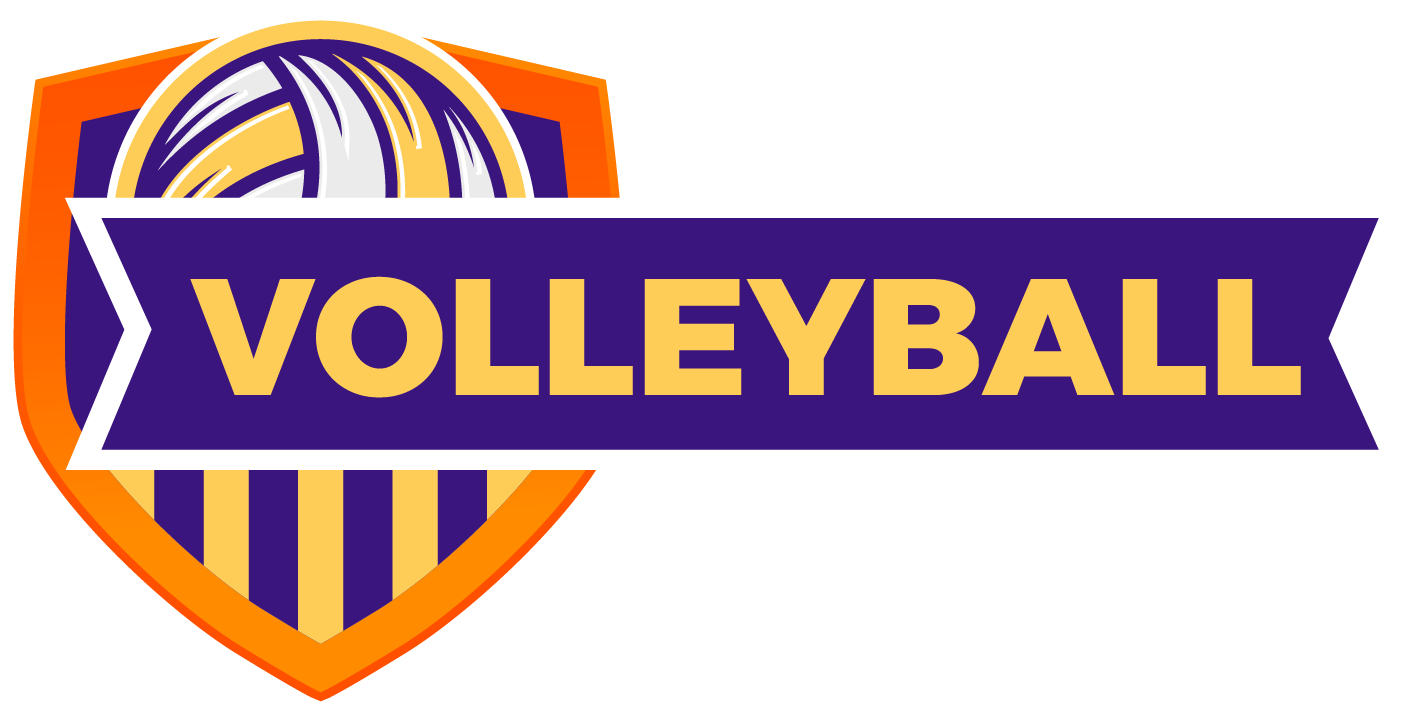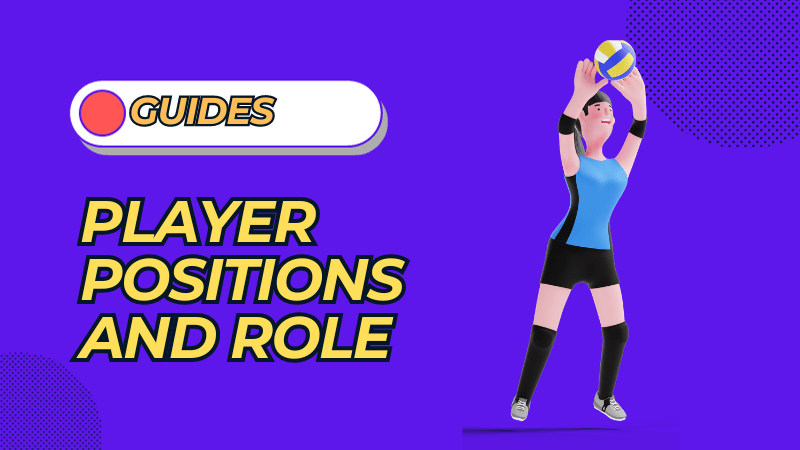Ah, the exhilarating sport of volleyball! If you’ve ever watched a volleyball match, you’ll know it’s not just about hitting the ball over the net. There’s a strategy, a rhythm, and specific positions each player assumes on the court. Each volleyball position has its unique role, adding depth to the game and making every moment unpredictable and thrilling.
But a little pain point for beginner volleyball players: understanding these positions can sometimes feel like deciphering a foreign language. Have you ever heard terms like “outside hitter” or “libero” and found yourself scratching your head? You’re not alone. The roles on the court, from the setter to the blocker, have specific duties crucial for a team’s success.
Stick with me as we delve deeper into the fascinating world of volleyball positions. Whether you’re a newbie trying to find your spot on the court or just a curious fan, this guide promises clarity and maybe a bit of fun!
What Are the Positions in Volleyball? Understanding Different Positions
Volleyball, a dynamic team sport, integrates various skills such as serving, passing, setting, attacking, blocking, and digging. Comprising distinct positions like the setter, outside hitter, opposite hitter, middle blocker, libero, defensive specialist, and serving specialist, each holds unique responsibilities and roles in the game, ensuring the team operates as a cohesive unit.
Setter
Responsibilities of Setter
A setter in volleyball plays a pivotal role, similar to a quarterback in football. Tasked with setting the ball for attackers, they dictate the offense’s pace. This requires a keen eye to simultaneously monitor the hitter and the block, determining the ideal location for the ball. Their aim? Perfectly placing the ball so the hitter can launch it over the net and into the opposing team’s court.
Location on the Court of Setter
Positioned on the right side of the court, setters defend from position 1 in the backcourt. They station themselves in position 2 in the front court, actively participating in blocks.
Outside Hitter
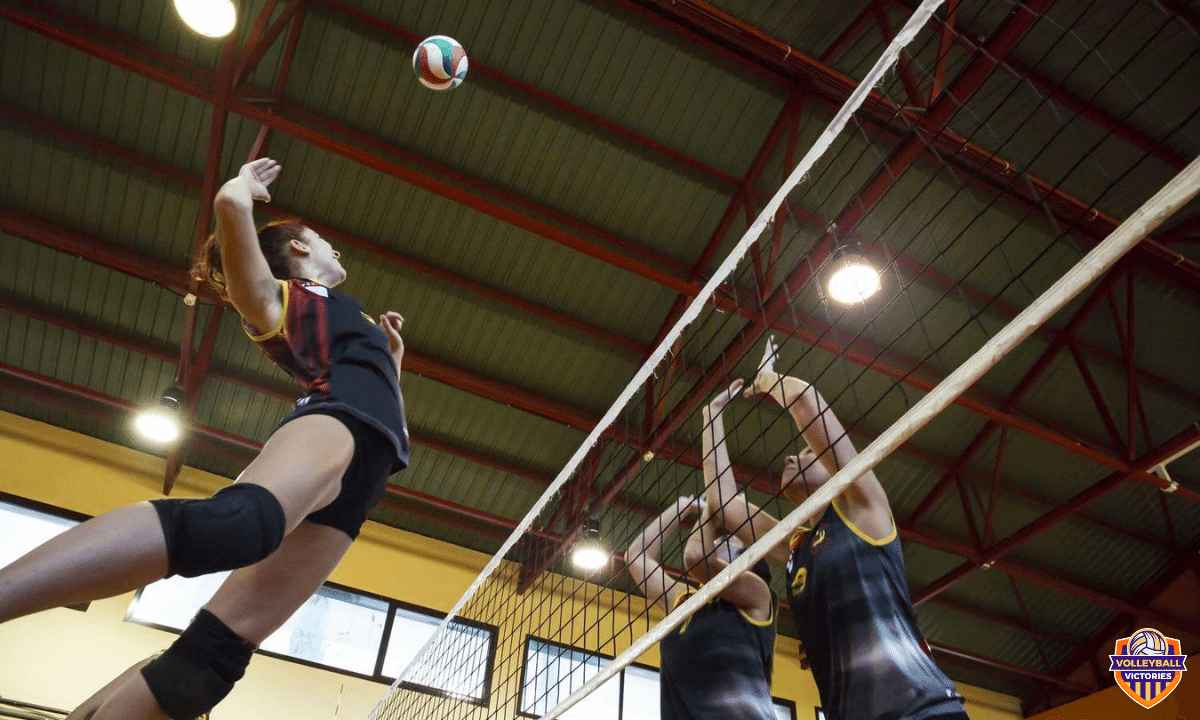
Responsibilities
Outside hitters play a multifaceted role. Not only do they receive serves, but they also unleash powerful attacks. Frequently receiving more balls than other players, they’re often the go-to in chaotic plays, ensuring the ball clears the volleyball net.
Location on the Court
Operating from the left side of the court, outside hitters usually pass from position 5 and take their aggressive shots from position 4.
Opposite Hitter
Responsibilities
Positioned as one of the two primary wing attackers, opposite hitters mainly function from the right side of the court. Their primary goal? Making scoring an arduous task for opposing hitters.
Location on the Court
The opposite hitter’s domain is the right side of the court. They position themselves in base 2 in the front court and shift to base 1 in the backcourt.
Middle Blocker
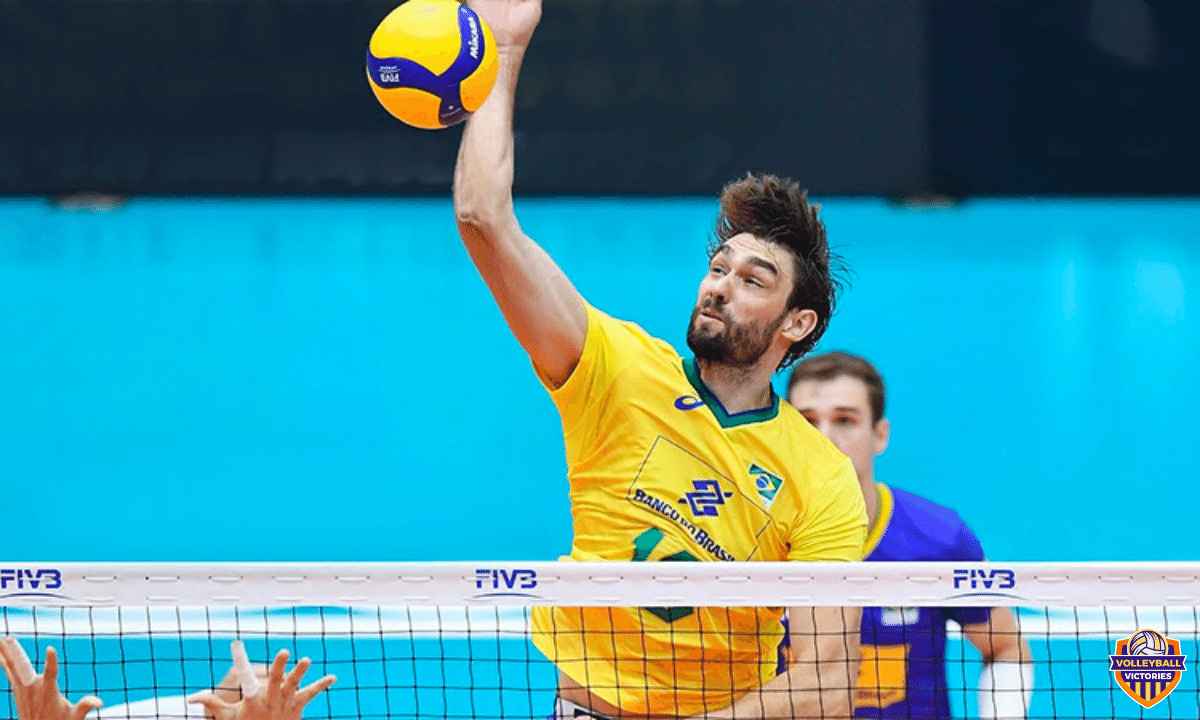
Responsibilities
The middle blocker is the team’s defensive fortress. Tasked with thwarting opposition spikers, they also strategically launch quick attacks through the court’s center. This offensive strategy is designed to divert enemy middle blockers, giving an edge to wing attackers.
Location on the Court
Taking the front and center stage, middle blockers can swiftly move in both directions, ensuring they block attackers efficiently.
Also, Read: How Many Sets Are in a Volleyball Match?
Libero
Responsibilities
The libero is the team’s shield, a defensive maestro ensuring the ball remains in play and deflecting potential scores from the opposing team. Specializing in service reception, they focus on defending against fierce attacks.
Location on Court
Restricted only to the back row, the libero exhibits their prowess in these positions.
Defensive Specialist
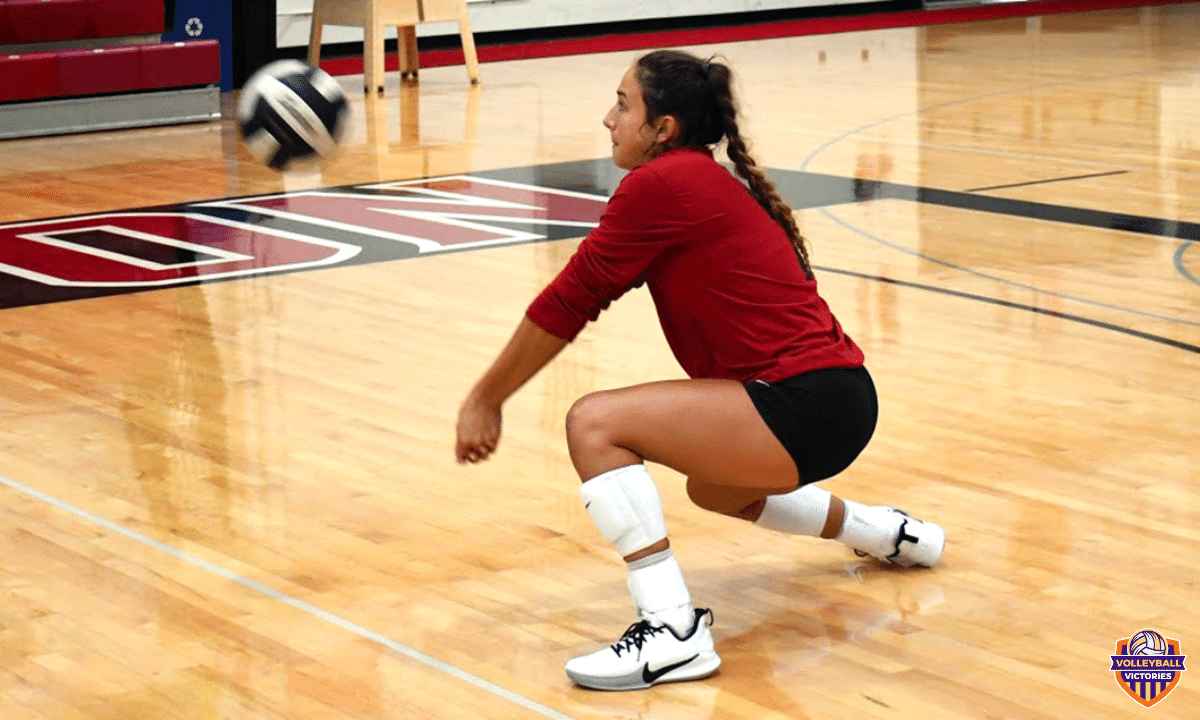
Responsibilities
The defensive specialist is the jack-of-all-trades in the back row. They concentrate on service reception, expert digging, and serving with precision.
Location on the Court
This versatile player can seamlessly replace any player in the back row, making them invaluable to the team’s defensive strategy.
Serving Specialist
Responsibilities
A serving specialist’s primary objective is simple yet vital: serve with unmatched effectiveness. Equipped with a diverse arsenal of serves, they bring a unique advantage every time they step on the court.
Location on the Court
Serving specialists make their grand entrance from behind their team’s end line, ready to kickstart the volleyball game with their formidable serves.
It’s worth noting that while these positions provide a general framework, specific team strategies or formations might introduce slight variations.
Also, Read: Best Volleyball Team Names
What Are the Hitting Positions in Volleyball?
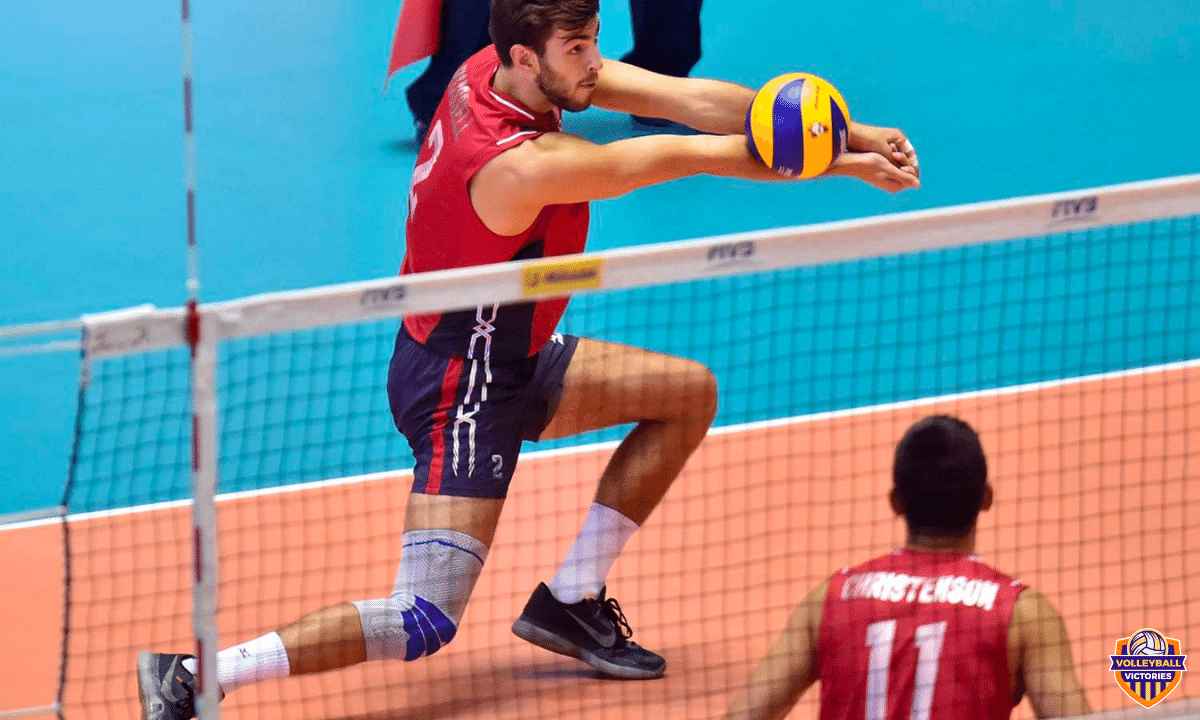
Hitting positions in volleyball hold pivotal roles, orchestrating powerful attacks that drive the game forward. These hitting roles on the volleyball court include:
- Outside Hitter: Often the most versatile attackers, outside hitters handle balls from the left side of the court. They not only execute aggressive attacks but are also fundamental in receiving serves. Their placement on the left side makes them essential during broken plays, ensuring the ball goes over the net even under pressure.
- Opposite Hitter: Positioned on the right side, opposite hitters provide an alternative attacking angle. They play directly against the opposing team’s outside hitter, making them critical in offensive attacks and defensive blocks. Their prowess lies in making the adversary’s attempts to score increasingly challenging.
- Middle Blocker: Although they’re called “blockers,” don’t be misled! Middle blockers are essential hitters, too. Positioned in the heart of the front row, these players execute quick hits, often in the form of fast-paced spikes straight down the middle. Their rapid plays are designed to catch the defense off-guard and draw attention away from the wing attackers, creating opportunities for others.
Each hitting position carries unique responsibilities and requires specialized skills. While they all focus on launching powerful attacks, their location on the court and strategies can differ vastly. Whether it’s the versatile outside hitter making plays from the left, the strategic opposite hitter from the right, or the swift middle blocker driving from the center, these hitters work in tandem, orchestrating attacks that keep the opposing team on their toes.
Also, Read: When Do You Rotate in Volleyball
What Are the Tallest and Shortest Volleyball Positions?
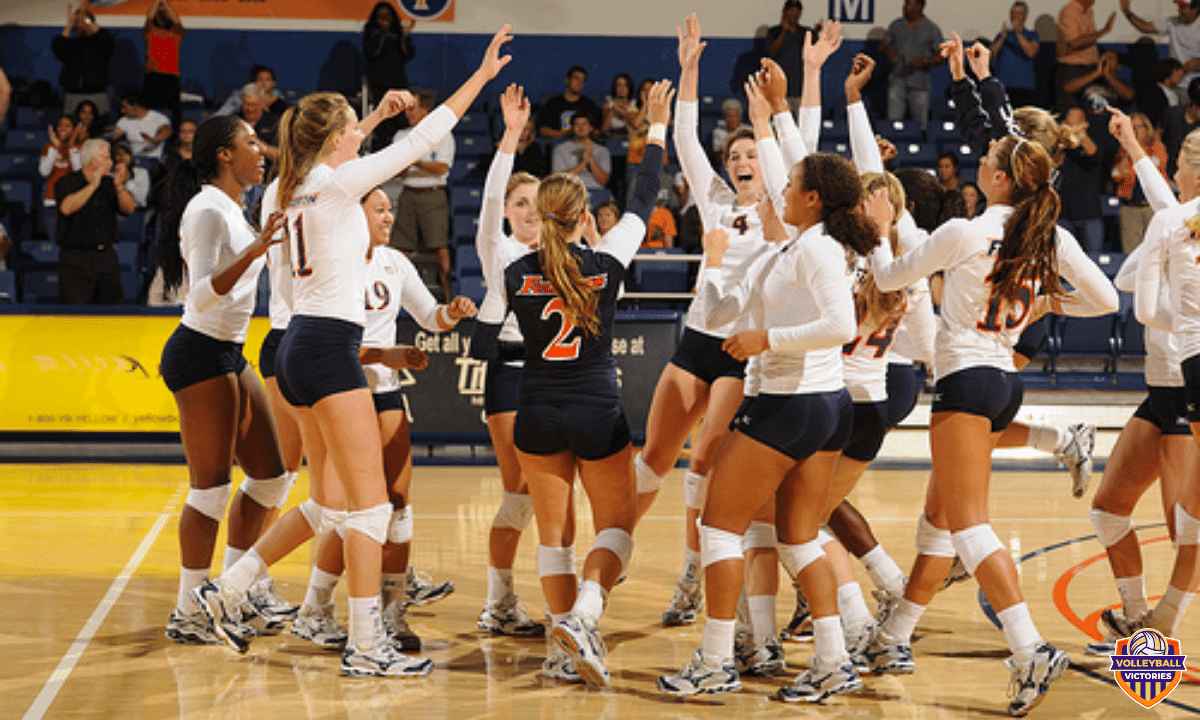
Like in many sports, height can be a game-changing factor in volleyball. It can be an advantage when trying to reach high over the net or a disadvantage when you need swift agility to defend low hits. Let’s dive into volleyball and pinpoint the positions that usually favor the tallest and shortest players on the court.
Tallest Player Positions – Middle Blocker
Often towering above the rest, the middle blocker claims the title for the tallest position in volleyball. Why? Their main role is to serve as the team’s first line of defense, thwarting the opponent’s attacks by blocking them at the net. This demands a significant reach and the ability to jump high and quickly. Those extra inches make a blocker’s task more effective, allowing them to cover more of the net and make it challenging for the opposing spikers to find an open spot.
Shortest Player Positions – Libero
On the flip side, we have the libero. This role doesn’t prioritize height. Instead, it values agility, quick reflexes, and excellent ball-handling skills. As the primary defensive player, the libero darts around the back row, retrieving balls, making passes, and ensuring no ball touches the ground without a fight. Given their focus on lower hits and digs, shorter players often excel in this position, leveraging their proximity to the ground to their advantage.
So, while the middle blocker may reach for the skies, the libero is your guardian of the court’s floor. Together, they exemplify how diverse physical attributes can be perfectly tailored to specific roles, creating a balanced and formidable volleyball team.
Also, Read: How to Bump a Volleyball
Conclusion
Volleyball is a diverse and intricate sport, and each position on the court contributes uniquely to the team’s success. Hitting positions, such as the outside hitter, middle blocker, and opposite hitter, each bring their specialized skills for attacking or blocking. They define the team’s offensive strength, with players positioned across the court from left to right, executing both defensive and offensive maneuvers.
Height plays an undeniably crucial role in how the game is approached. While the towering middle blockers leverage their stature to dominate at the net, the swift and agile liberos focus on guarding the court’s floor, ensuring no ball passes them unchecked. Together, they showcase the sport’s versatility, accommodating players of all heights and skills.
In the grand tapestry of volleyball, every position, whether tall or short, hitter or defender, serves as an essential thread, creating a cohesive and formidable team ready for any challenge.
FAQs
How Many Positions Are There in Volleyball?
In the dynamic game of volleyball, there are six fundamental positions: setter, outside hitter, opposite hitter, middle blocker, libero, and defensive specialist. But there’s more! A unique seventh spot is reserved for the serving specialist, ensuring every serve packs a punch.
What Is the Most Important Position in Volleyball?
While every player on the court has a pivotal role, the setter is often spotlighted as the most vital. Think of them as the quarterback in football – dictating the flow, setting up plays, and guiding the offense. Their primary job? Perfectly setting up the ball for attackers, ensuring each hit is a potential point.
What Is the Hardest Volleyball Player Position?
The ‘the most challenging position’ title in volleyball sparks the debate. Most often point towards the libero, the unsung hero who willingly takes a backseat from the limelight to ensure the team’s defense is rock solid. Their role is defined, demanding immense discipline. But remember to consider the middle position! The middle blockers, standing tall and powerful, have the daunting task of thwarting the opponents’ attacks, making it a close contender for the title.
What Positions Serve in Volleyball?
Volleyball is all about rotation and team dynamics. While there are six Volleyball positions on the court, divided equally between the front and back row, serving isn’t limited to one. Players shuffle through these positions, and when they land on the designated spot, they get the honor of serving, ensuring every player gets a shot at this crucial task.
